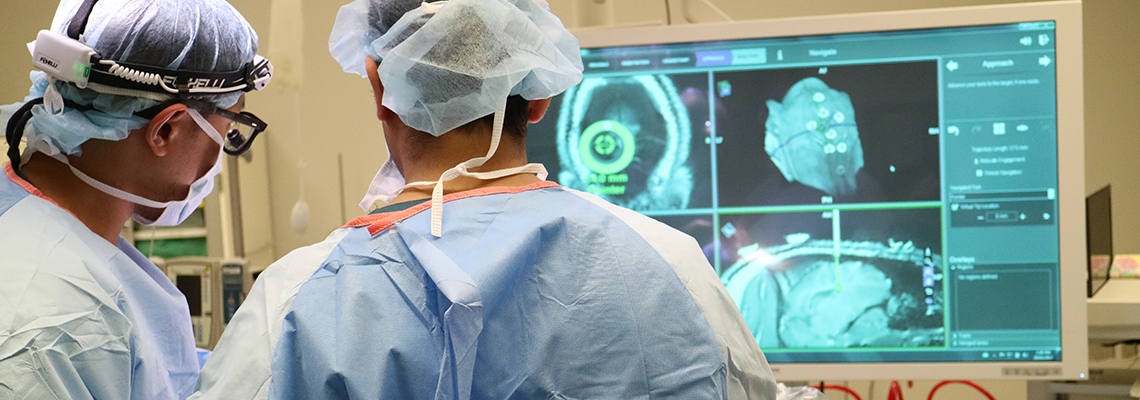Projects & Highlights

The Cerebrovascular Research Laboratory studies brain circulation in normal and pathological conditions. For normal functioning the brain is critically dependent on a continuous and adequate blood supply. Brain circulation abnormalities, acute, like stroke or subarachnoid hemorrhage, or chronic, like vascular dementia, lead to long-lasting or permanent brain damage. The Cerebrovascular Research Laboratory explores physiology and pathophysiology of brain circulation in search of new therapeutic approaches to brain pathologies related to brain circulation. Using multidisciplinary approaches and the Cerebrovascular Research Lab studies:
• Hemorrhagic and ischemic strokes• Subarachnoid hemorrhage• Neuroprotection• Traumatic brain injury
HEMORRAGIC AND ISCHEMIC STROKES
In spite of significant efforts to find new therapies, hemorrhagic and ischemic strokes remain in the top 10 causes of long term disability. The Cerebrovascular Research Laboratory is exploring innovative approaches developed in our Laboratory to the preservation of brain tissue following the catastrophic events using neuromodulation and “electroceuticals” tools to activate innate neuroprotective mechanisms. The Laboratory also collaborates with the Neuroregeneration laboratory to explore potential of stem cell therapy to recover damaged brain tissue.
SUBARACHNOID HEMORRHAGE
Subarachnoid hemorrhage, the catastrophic event resulting from the rupture of brain aneurism and traumatic damage of large brain surface arteries, leads to long-term or permanent brain damage. One of the factors leading to the long-term brain damage is abnormalities of cerebrospinal fluid flow, which interrupts normal clearance of brain parenchyma from various waste products. In our Laboratory we are exploring the role of innate brain coagulation system in the control of hemorrhage and regulation of cerebral fluid flow. This innovative approach will potentially lead to the development of new therapeutic approaches for the treatment of subarachnoid hemorrhage consequences.
NEUROPROTECTION
Brain is very delicate and depends on the stable continuous supply of oxygen and glucose provided by brain circulation. The complex system has evolved to protect the brain against damage due to inadequate supply of these major elements. This system includes regulation of cerebrovascular flow and the innate neuroprotective mechanisms. This system is activated naturally, for example, during diving or hibernation. Our Laboratory explores methods to protect the brain in various damaging conditions using innovative neuromodulation and electroceuticals approaches.
TRAUMATIC BRAIN INJURY
Traumatic brain injury presents a significant problem for military and civil population. Finding a treatment for this detrimental condition remains a serious challenge. Our Laboratory is developing new ground-breaking neuromodulatory approaches to address this problem.
